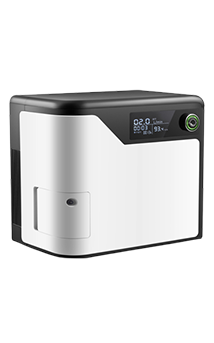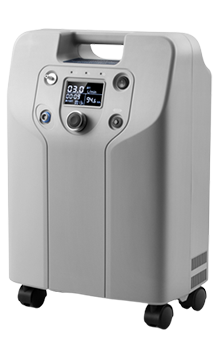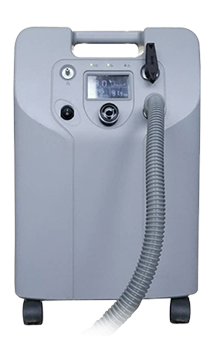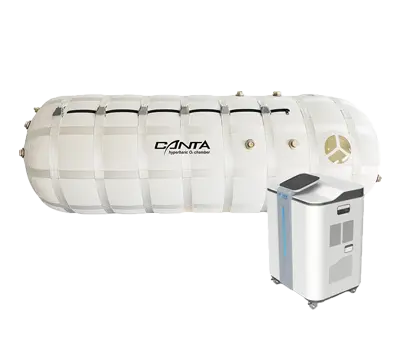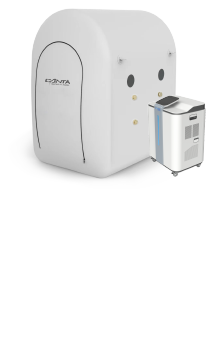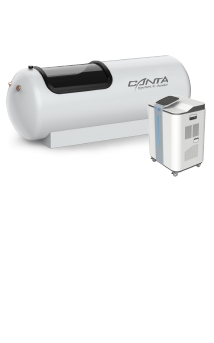What Is Hyperbaric Oxygen Treatment?
Hyperbaric oxygen treatment is a process of treating diseases by pressurizing the environment in a hyperbaric chamber and inhaling high concentrations of oxygen.
Hyperbaric oxygen therapy is an effective new medical treatment and is a non-invasive physical therapy that is safe, effective, economical, and environmentally friendly. It is in line with people's psychology of returning to nature and has been widely accepted.
Indications for Hyperbaric Oxygen Treatment
Acute Indications
Acute carbon monoxide poisoning encephalopathy, acute thrombotic diseases, some harmful gas poisoning (liquefied gas, hydrogen sulfide, gasoline, etc.), suffocation (drowning, electric shock, hanging), retinal artery embolism, acute brain dysfunction after cardiopulmonary resuscitation, crush injury and crush syndrome, acute peripheral circulatory disorder, severe spinal cord injury.
Non-acute Indications
Neurosurgery: traumatic brain injury, post-traumatic consequences, benign intracranial tumors after surgery.
Neurology: cerebral infarction, cerebral vasospasm, cerebral thrombosis, multiple sclerosis, viral encephalitis, neurological headaches.
Otorhinolaryngology: sudden deafness, tinnitus, explosion deafness, dizziness syndrome.
Ophthalmology: retinal vein thrombosis, optic nerve atrophy (early stage), diabetic retinopathy, central serous chorioretinopathy, ischemic retinopathy.
Orthopedics: fractures and non-union, aseptic bone necrosis, femoral head necrosis, finger replantation after amputation, skin and bone grafting after surgery, osteomyelitis, etc.
Dentistry: periodontal disease, orthodontic surgery.
Cardiology: coronary heart disease, angina pectoris, myocardial infarction, myocarditis, cardiac arrest after resuscitation, cardiac repair after heart disease surgery.
General surgery: crush injury, crush syndrome, ulcerative colitis, non-healing wound, ischemic ulcer.
Effects of Hyperbaric Oxygen Treatment
Improve Sub-health
Insufficient exercise, poor metabolism, fatigue of the heart and brain, slow blood flow, and cerebral ischemia are all in a sub-healthy state. Hyperbaric oxygen therapy can quickly oxygenate the body, increase the oxygen content in the blood, and timely improve sub-healthy symptoms such as fatigue, insomnia, and headaches.
Repair Damaged Cells
Under hypoxic conditions, anaerobic metabolism of the body will produce toxins and cell damage. Hyperbaric oxygen can enhance aerobic metabolism, promote the repair of damaged cells, and restore cell vitality.
Inhibit Tumor Cells
Tumor cells have anaerobic characteristics, and hyperbaric oxygen can weaken the activity of tumor cells, adjust the cell cycle, and improve the efficacy of radiotherapy and chemotherapy.
Restore Alkaline Physique
Under hypoxic conditions, the body is prone to metabolic acidosis, which can cause disorders in the body's own regulation of acid-base balance systems. Hyperbaric oxygen can regulate the disorderly acid-base balance systems in the blood and tissues and restore the alkaline physique.
Antibacterial and Antifungal
Hyperbaric oxygen can inhibit the growth and replication of anaerobic bacteria and some aerobic bacteria, reduce the production of toxins, and also produce positive synergistic effects with some antibiotics to improve the body's antibacterial and antifungal capabilities.
Regulate the Body's Immunity
When white blood cells ingest pathogens, their oxygen consumption significantly increases. Hyperbaric oxygen can enhance the vitality of white blood cells and other immune cells, and regulate the body's immune system in multiple directions.
Promote Microcirculation
Hyperbaric oxygen can promote blood vessel constriction, speed up blood microcirculation, help transport nutrients and eliminate metabolic waste, and slow down the heart rate.
Oxygen Protection for High-Risk Occupation of the Heart and Brain
Police, scientific research, geological, sports, media, and other industries are always in a state of high mental tension, which makes the body's cells chronically deficient in oxygen. This causes the body to overdraft continuously, eventually leading to nervous breakdown, body fatigue, poor circulation, weakened immune system function, metabolic disorders, and toxin accumulation. These high-risk groups can all undergo health care with hyperbaric oxygen.
Elderly Health Care
As age increases, various substances continue to deposit on the blood vessel wall, and blood viscosity increases, causing tissue cells far away from the blood vessels to experience hypoxia and ischemia. If not intervened in a timely manner, these tissue cells will have insufficient aerobic metabolism, and finally cause cell apoptosis. Regularly providing sufficient oxygen can periodically correct hypoxia and ischemia, delay and reduce the speed and quantity of cell death, improve metabolic function, microcirculation, cell repair function, and immunity, and achieve the purpose of prolonging life.
 EN
EN  ja
ja  ko
ko  fr
fr  de
de  es
es  it
it  ru
ru  pt
pt  ar
ar  tr
tr  th
th  da
da  fa
fa  pl
pl  ro
ro  hu
hu  el
el  af
af 


